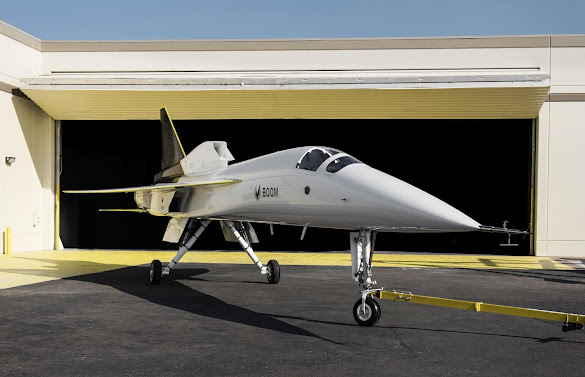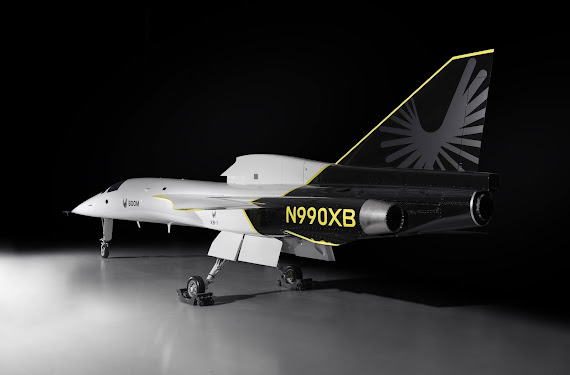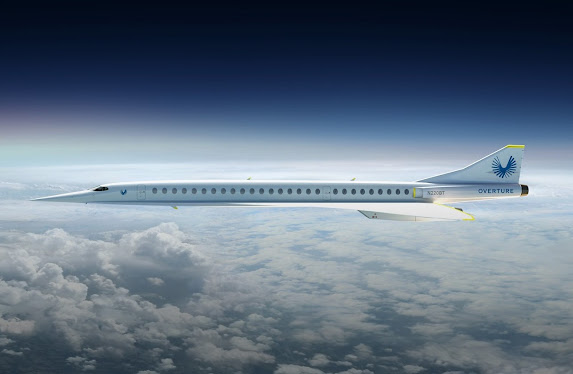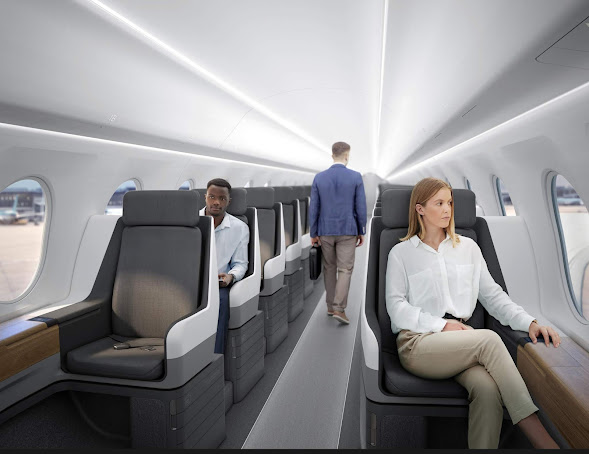- General
- October 8, 2020
- 10 minutes read
Boom Rolls Out A Supersonic Jet
Boom XB-1. Photo credit: Boom Supersonic Boom Supersonic, an aerospace upstart looking to bring back commercial supersonic air travel, has…
 |
| Boom XB-1.
Photo credit: Boom Supersonic
|
Boom Supersonic, an aerospace upstart looking to bring back commercial supersonic air travel, has debuted its first supersonic jet, the XB-1. The new jet, still a prototype and a demonstrator version for a much larger plane, is set for a test flight for the first time ever next year, a flight that Boom says will be carbon-neutral in response to concerns of its supersonic jet burning lots of fossil fuel and causing higher-than-normal pollution. The XB-1 has been unveiled fully assembled for the first time ever in just six years after Boom as a company was founded. The new prototype aircraft is a predecessor and akin to a lab rat for the much larger Overture aircraft that Boom is working on, one that’s expected to ferry passengers at supersonic speeds between destinations.
The XB-1 supersonic jet is acting as a test bed for the more complex and sophisticated Overture that’s targeted to be put into service by 2030. Being a test aircraft, the Boom XB-1 is equipped with just one seat for a pilot compared to the Overture which is planned to hold up to 88 passengers. Following its debut, the XB-1 will now undergo extensive ground testing before heading to Mojave Desert for flight tests in a military zone. At the same time when the XB-1 is being tested, Boom’s engineers will ramp up work on Overture’s propulsion system and conduct wind tunnel tests to validate aircraft design. The Overture itself is slated for a rollout by the year 2025.
 |
| Photo credit: Boom Supersonic |
 |
| Boom Overture.
Photo credit: Boom Supersonic
|
 |
| Boom Overture interior rendering.
Photo credit: Boom Supersonic
|
Specs and features
The XB-1 is powered by three General Electric J85-15 engines that give more than 12,000 pounds of thrust to enable supersonic speeds. The plane packs a carbon-composite airframe that helps maintain strength and rigidity under the high temperatures and material stress generated by supersonic flight. It packs a 71-foot-long fuselage that’s ideally shaped for high-speed aerodynamic efficiency.
For pilot vision, the XB-1 is fitted with a high-resolution video camera and cockpit display to give pilots what can be termed a virtual window through the plane’s nose. Particularly for the XB-1, feedback and guidance from test pilots were incorporated and adhered to for the plane’s cockpit design.
Supersonic travel
Boom Supersonic, a company incubated through the famed Y Combinator accelerator program, is looking to bring back commercial supersonic air travel since the demise of the Concorde plane in 2003. Boom itself seems to be one of Y Combinator’s most interesting affiliated companies, tackling a relatively big challenge and being a company that’s ideally a moonshot. Unlike the Concorde supersonic jet which was co-developed by the nations of United Kingdom and France, Boom itself is a private company backed by private investors. So far, the Denver, Colorado-based company has raised $160 million in funding from investors including Y Combinator, SV Angel, Emerson Collective, Caffeinated Capital, and Japan Airlines, which itself has made reservations for 20 Boom Overtures.
Boom is targeting to put the Overture into service by 2030, a decade from now. The company will sell the Overture at a proposed cost of $200 million to airline companies, two of whom — Japan Airlines and the Virgin Group — have already reserved 30 units between them. Another reservation has also been made by the US Air Force under a partnership to develop an Overture configuration designed for Air Force executive transport.
Boom Supersonic is looking to make a dent in the air travel industry by bringing back commercial supersonic air travel. Before now, the Concorde jet was the only viable means of commercial air travel, with a maximum speed (Mach 2.04) over two times the speed of sound. Due to challenges including economic viability and a trailing sonic boom during flight that meant it could only fly over water and not in residential areas, the Concorde saw its way to retirement in the year 2003. Just like the Concorde, the Boom Overture is targeted mainly for transoceanic flights but is aiming to tackle the problem of economic viability.
In its existence of just six years, Boom has fared relatively well to the point of a successful prototype with just a team of 140 full-time employees. Boom is staffed by aerospace veterans with experience from established firms such as SpaceX, NASA, and Boeing.






